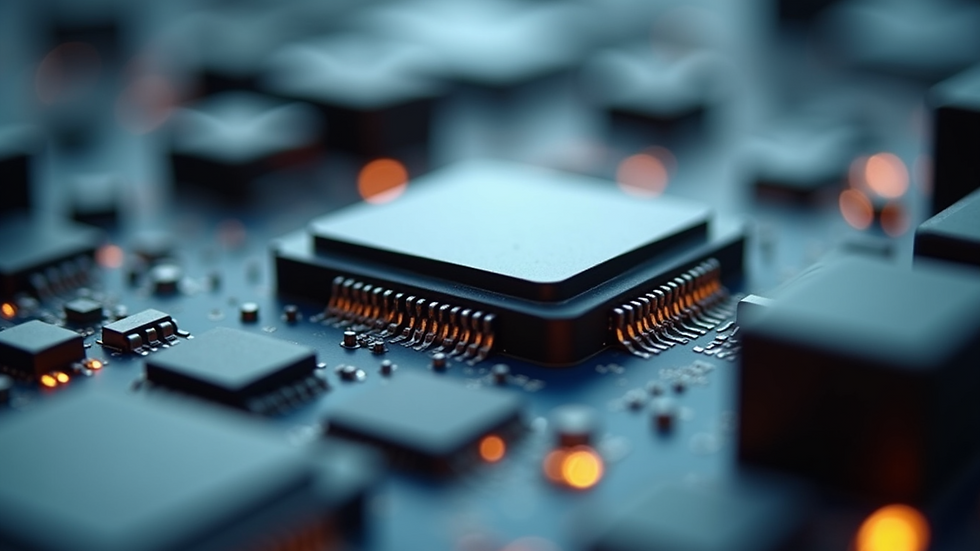Understanding Piezoelectric Materials: Their Effect and Applications
- Chris Baca
- Sep 11
- 4 min read
Piezoelectric materials might sound complex, but they play a significant role in many everyday technologies. From the watches we wear to the microphones we use, piezoelectric materials and the piezoelectric effect are involved in numerous applications. In this blog post, we explore what the piezoelectric effect is, the common materials that exhibit this phenomenon, and how they are utilized in the real world.
What is the Piezoelectric Effect?
The piezoelectric effect refers to the ability of certain materials to generate an electric charge in response to applied mechanical stress. When these materials are compressed or twisted, they produce a voltage. This property is reversible; applying electrical energy to them can induce mechanical deformation.
The term “piezoelectric” comes from the Greek word "piezo," meaning "to press." This effect was discovered in the late 19th century by Pierre and Jacques Curie. They noted that certain crystals, when subjected to mechanical stress, would generate an electrical charge.
How Does it Work?
To understand how piezoelectricity works, it’s essential to look at the structure of piezoelectric materials. These materials have a non-uniform structure that allows the movement of electrical charges. When stress is applied, the internal positive and negative charge centers are displaced, creating a voltage across the material.

The efficiency of this effect varies among materials, with some being more sensitive to stress than others.
Common Piezoelectric Materials
A variety of materials exhibit piezoelectric properties. Here are some of the most common:
1. Quartz
Quartz is one of the most recognized piezoelectric materials. It's a naturally occurring mineral made predominantly of silicon and oxygen. Recognized for its stability, quartz is used in watches, sensors, and various electronic devices.
2. Ceramics
Piezoelectric ceramics, such as lead zirconate titanate (PZT), are widely used due to their strong piezoelectric response. These materials can be engineered with varying properties for specific applications, making them valuable in devices like ultrasonic transducers and piezoelectric motors.
3. Polyvinylidene Fluoride (PVDF)
PVDF is a type of plastic that also exhibits piezoelectric behavior. It is flexible and lightweight, making it ideal for a range of applications, including sensors and actuators. PVDF is often used in medical devices where flexibility is crucial.

4. Rochelle Salt
Rochelle salt was one of the first materials discovered to exhibit the piezoelectric effect. Although not widely used in modern technology, it serves as a historical example of how piezoelectric materials were first identified and studied.
5. Biomaterials
Certain biological materials possess piezoelectric properties as well. For example, collagen, found in connective tissues, can generate electric signals when subjected to mechanical stress, which may play a role in healing processes.
Real-World Applications of Piezoelectric Materials
The versatility of piezoelectric materials leads to several practical applications across different fields. Here are a few notable examples:
1. Sensors
Piezoelectric materials are frequently used in sensors to detect pressure, acceleration, and vibrations. For example, piezoelectric pressure sensors are used in automotive systems to monitor tire pressure and ensure safety.
2. Actuators
In robotics, piezoelectric actuators convert electrical energy into precise movements. For instance, they can control the movements in miniature robots or even in advanced surgical tools that require precise manipulation.
3. Energy Harvesting
One exciting application of piezoelectric materials is in energy harvesting, where mechanical energy from vibrations or movement is converted to electrical energy. Devices utilizing this technology can power small electronics, such as sensors in remote locations without batteries.

4. Medical Devices
In the medical field, piezoelectric materials are used in ultrasound machines to both generate and receive sound waves. They are integral to the functioning of these machines, allowing for the imaging of organs, tissues, and even blood flow.
5. Musical Instruments
Some musical instruments incorporate piezoelectric materials in their design. For example, piezoelectric pickups are commonly used in electric guitars to convert string vibrations into electrical signals, enhancing sound quality and amplification.
The Future of Piezoelectric Materials
The prospects for piezoelectric materials are continuously evolving. Research is ongoing to develop new materials and improve the efficiency of existing ones. Researchers are exploring ways to use nanotechnology to create piezoelectric materials at smaller scales, potentially leading to breakthroughs in microelectronics and smart devices.
As industries lean more towards sustainability, the role of piezoelectric materials in energy harvesting offers a promising pathway to reduce reliance on non-renewable energy sources.
Exploring the Piezoelectric Effect in Daily Life
Understanding the piezoelectric effect enhances our appreciation of the technology that surrounds us. By recognizing how piezoelectric materials work, students and technology enthusiasts can explore careers in fields ranging from engineering to medical technologies. The piezoelectric effect connects the physical world with electrical engineering, demonstrating the inherent beauty of science.
Incorporating piezoelectric materials into existing technology and fostering innovation can lead to breakthroughs not yet imagined. The future of piezoelectric materials is bright, and it is only limited by our creativity and scientific advancement.
As we continue to explore these materials and their applications, we open doors to new technological innovations that will shape our world.
Final Thoughts
By studying the piezoelectric effect and its materials, students can gain valuable insights into the balance between mechanical and electrical systems. This knowledge empowers future innovations and encourages a deeper understanding of applied sciences. Whether you are focused on a career in engineering, materials science, or electronics, mastering concepts like piezoelectricity will certainly enhance your capabilities and prospects.
As technology evolves, the role of piezoelectric materials will undoubtedly expand, influencing various industries and paving the way for novel applications we haven't yet envisioned. Embrace this knowledge and be part of the exciting future that lies ahead!



Comments